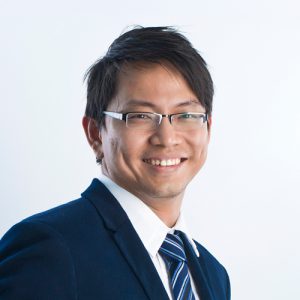Singapore Budget 2024 introduced significant changes to the CPF regime. In particular, many are mourning the death of CPF SA shielding.
Here, we present some alternatives to high interest and liquidity for your consideration.
What is CPF SA Shielding?
CPF SA Shielding was a strategy that maximises interest income in the CPF accounts when a CPF member turns 55 years old.
At the age of 55, CPF will create a Retirement Account (RA), on top of the existing Ordinary Account (OA) and Special Account (SA). Once the RA is created, current funds from both the OA and SA will automatically flow into it, up to the prevailing Full Retirement Sum (FRS) for that year.
In terms of priority, SA funds would be transferred into the RA before funds in OA are moved. The catch was, the SA offered a higher interest rate than OA.
Hence, the idea behind CPF SA shielding is to move OA funds into RA, thereby allowing CPF members to keep as much funds as possible in the SA.
To execute this, astute CPF members would invest their SA funds in permitted investment products included under the CPFIS, just before they turn 55. After the RA is formed and funds have been transferred out, they would sell their SA investments and cash would be returned to the Special Account.
The death of CPF SA Shielding
With the latest updates announced in the Singapore Budget 2024, the CPF Special Accounts of those aged 55 and above will be closed from 2025.
With this new announcement, the CPF SA shielding strategy is no longer available.
What will happen to your CPF SA funds?
Effective immediately, only the Retirement Account (RA) with an Enhanced Retirement Sum (ERS) amount and Medisave will be eligible for an interest rate of at least 4.08% once a CPF member reaches the age of 55. The RA will be utilized for CPF LIFE premium, and it’s important to note that the return of CPF LIFE is not 4.08%.
CPF SA of those aged 55 and above will be closed from 2025.
All CPF members currently above the age of 55 will also have their SA closed from 2025 and the monies will be transferred to the OA after setting aside FRS in RA.
For CPF members who currently have their SA funds in other investments, once the investments are sold, the monies will be returned to the OA as the SA would no longer exist.
Alternatives to CPF SA Shielding
1. Do nothing
At the end of the day, a 2.5% interest rate in the OA could be higher on a long term basis as compared to bank interest rates which have limits and hurdles such as salary crediting.
But that’s not what you’re here for.
Instead, you could consider:
2. Continue to contribute, earn higher interest until age 65, then withdraw part of your monies
1M65 went through the policies and found that you are able to withdraw your FRS partially from 65.
Alternatively, you may choose to pledge your property and withdraw up to 50% of your FRS. The caveats are that the property must be in Singapore and the remaining lease must last you up to at least age 95.
The downside to these moves is that the CPF policies can change anytime. What would you do if before you turn 65, they throw another bomb and reduce your withdrawal amount. If this worries you, you can consider:
3. One-off limited shielding
Instead of passively allowing your CPF SA funds to flow into the OA, you can still invest your SA into another product before 55 and reap the higher interest rate for that period.
For example, investing in a 10 year T-bond currently yields about 3.1%. At age 65, T-bond would mature and the funds would be returned to the OA. While you do not hit the same 4.08%, you’ll enjoy a higher interest rate than CPF OA’s 2.5% for at least 10 years.
Upon maturity, you have the option to either move the monies into the RA or let it return to OA and make another investment from there. There is a wide range of investments available to the CPFIS-OA that can potentially beat the 2.5% or even 4.08% rate.
4. Invest your capital for higher yields
If you’re an investor who is confident in managing your capital, then you may want to consider investing.
Chris shared a simple quantitative strategy that you can use to build a sustainable Singapore stocks portfolio that could provide a 4% yield.
If picking stocks isn’t your thing, you could also explore index investing where you invest in ETFs with strong historical performance too.
The downside to investing your capital is the additional volatility and risks that you’ll have to stomach as an investor. You might also need to design a reliable decumulation plan once you hit 65 years or older.
Note that the above information is generic and not personal advice. You should not take any action based solely on reading one article. If you need personal advice, please reach out to Louis here.
For more articles on how the CPF SA Closure affects you, read:
- Budget 2024 CPF changes: How much do you need to commit to your CPF Retirement Account?
- Budget 2024 CPF changes: A best-effort attempt to replace the 4% return of the CPF Special Account
- CPF Changes: ERS Now 4x BRS But Kiss CPF SA Shielding Goodbye
- The return for RA is 4.08%, but the return for CPF LIFE is not!

